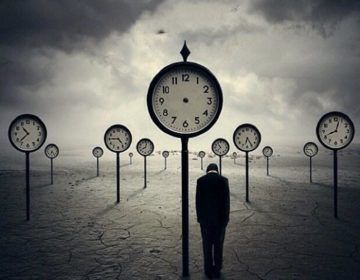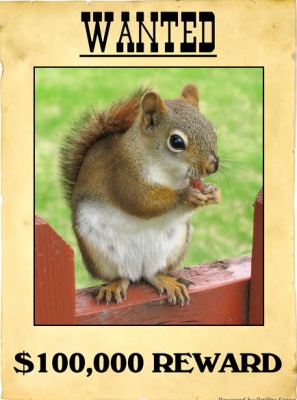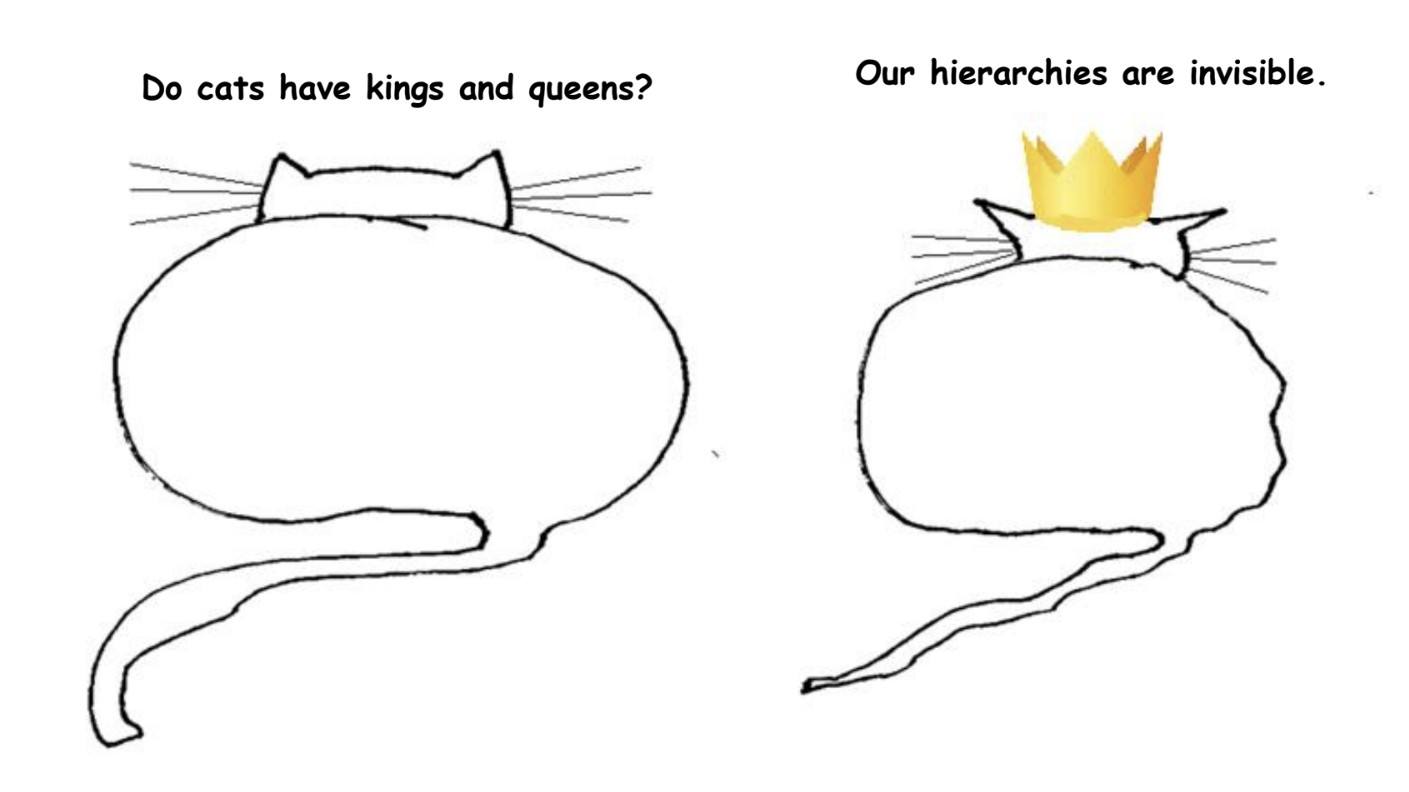Flowers outside the Music School in Brixen, South Tyrol.
Category: Monday Magazine
Though we are an aggregator blog (providing links to content elsewhere) on all other days, on Mondays we have only original writing by our editors and guest columnists. Each of us writes on any subject we wish, and the length of articles generally varies between 1000 and 2500 words. Our writers are free to express their own opinions and we do not censor them in any way. Sometimes we agree with them and sometimes we don’t.Below you will find links to all our past Monday columns, in alphabetical order by last name of the author. Within each columnist’s listing, the entries are mostly in reverse-chronological order (most recent first).
Mists, Mellow Fruitfulness, Spiders in Bedsheets—Enter Autumn
by David S. Greer

John Keats can be forgiven for overlooking the spiders in his ode “To Autumn”. Who can blame him for accentuating the positive, given the health issues that eventually overcame him, barely 25, in his rude room by the foot of the Spanish Steps?
My sometime island abode in the Salish Sea, the inland sea that touches Vancouver and Seattle and is home to the Canadian Gulf Islands and the American San Juans, is a long way from the Spanish Steps and a favorite haunt of spiders in autumn. Early on a late September morning on the cliff-edge path to Gowlland Point, dewdrops sparkle like diamonds in elaborate silken webs draped over long grasses with exquisite care. Spiders are to autumn as strawberries are to June. What’s not to like?
An older cabin in the woods is an invitation to wildlife invasion. Black-tailed deer content themselves with napping under the deck, and river otters make the quarter-mile trek from the ocean on rare occasions to investigate the crawl space as a potential den, but entering the interior of the cabin is the particular province of birds and bats (accidentally) and spiders (less so). Field mice would gladly join the parade, and have done so in the past, but for the time being are flummoxed by plugs of steel wool in every mouse-sized hole. Their tactical engineering squads are believed to be working on solutions every day. As for other invaders, live rescues are my preferred approach. Hummingbirds and wrens can be trapped in Tupperware containers, a sheet of cardboard slipped over the opening, and released outdoors. A juice glass will suffice for errant wasps and moths. Read more »
Charaiveti: Journey From India To The Two Cambridges And Berkeley And Beyond, Part 63
by Pranab Bardhan
All of the articles in this series can be found here.
 The international academic conference circuit—for an amusing account of such circuits, one may read the British writer David Lodge’s novel Small World, which is second in his trilogy of campus novels, the first of which Changing Places is largely on Berkeley in the 1960’s—also brought me to some potentially hazardous situations. Once a reception given for us conference participants by the King of Spain indirectly helped me in what could have been a serious loss from a pickpocket in Madrid. The public reception hall was not far from the hotel where we were staying. I was walking there from the hotel with a fellow conference participant. I was busy explaining a particular point to her in conversation when I had a half-sense that two young women who brushed by seemed a bit too close, and I ignored that for a minute. The next minute I felt the inside of my jacket pocket and it was gone—a wallet containing not just money but a few important cards including credit cards (since then I have been careful not to put everything in the same wallet or pocket). So I excused myself from my companion and ran to a nearby policeman and told him about it. He brought out a whistle and made a signaling sound. Within 5 minutes another policeman from the opposite pavement came toward me with my wallet and asked me to check if everything was in place. Those two unlucky young women did not realize that as the King was to be there soon, the whole area was thick with plain-clothes policemen.
The international academic conference circuit—for an amusing account of such circuits, one may read the British writer David Lodge’s novel Small World, which is second in his trilogy of campus novels, the first of which Changing Places is largely on Berkeley in the 1960’s—also brought me to some potentially hazardous situations. Once a reception given for us conference participants by the King of Spain indirectly helped me in what could have been a serious loss from a pickpocket in Madrid. The public reception hall was not far from the hotel where we were staying. I was walking there from the hotel with a fellow conference participant. I was busy explaining a particular point to her in conversation when I had a half-sense that two young women who brushed by seemed a bit too close, and I ignored that for a minute. The next minute I felt the inside of my jacket pocket and it was gone—a wallet containing not just money but a few important cards including credit cards (since then I have been careful not to put everything in the same wallet or pocket). So I excused myself from my companion and ran to a nearby policeman and told him about it. He brought out a whistle and made a signaling sound. Within 5 minutes another policeman from the opposite pavement came toward me with my wallet and asked me to check if everything was in place. Those two unlucky young women did not realize that as the King was to be there soon, the whole area was thick with plain-clothes policemen.
My conferences sometimes took place in cities where more violent robberies were quite frequent even in broad daylight. I remember the first day we were in our MacArthur network conference in Rio de Janeiro, at the lunch break we were told that the lunch would be in a restaurant just one block away. When we came out the building we saw that some giant commandos were guarding us all along the road as we were walking to the restaurant. I was told that this was part of the conference arrangement. I thought the organizers were over-doing it. But in the afternoon during the conference one woman in our group, who without telling anyone went to the store just next door to the hotel main gate, came back in tears saying that she was mugged. I faced a roughly similar situation in Nairobi and also in a couple of cities in South Africa; during the lunch break I thought I’d just go out for short walk around the big hotels where our conferences were, but the hotel guards would refuse to let us go out for the sake of our safety. I noted this situation might not be unrelated to the fact that in all those 3 countries, Brazil, Kenya and South Africa, the level of inequality is extremely high. Read more »
Monday, September 19, 2022
The Gendered Ape, Essay 3: Do Only Humans Have Genders?
Editor’s Note: Frans de Waal’s new book, Different: Gender Through the Eyes of a Primatologist, has generated some controversy and misunderstanding. He will address these issues in a series of short essays which will be published at 3QD and can all be seen in one place here. More comments on these essays can also be seen at Frans de Waal’s Facebook page.
by Frans de Waal

I’ve been told that gender is uniquely human, so what would be the point of comparing us with other species? They only have sexes.
I find this highly unlikely.
Jonas, a two-year-old baby, closely follows every bluff display by high-ranking males in the chimpanzee colony. Each male has a distinctive style, including spectacular jumps, hand-clapping, flinging objects, and breaking off branches. The alpha male often drums for minutes on end against a specific metal door to demonstrate his vigor. Mothers keep their little ones close throughout this racket, but let them go as soon as the performer calms down. Once released, Jonas runs up to the exact same door. With all his hair on end, he kicks it just like alpha had done. It doesn’t sound the same, but he has the right idea.
I’ve often seen male infants do so, never females. Young females rather follow the actions of adult females, such as their mother. I call it “self-socialization:” young primates emulate the behavior of adults of their own sex. They choose them as models. If their monkey-see-monkey-do mentality helps them develop sex-typical behavior, we could say that they have “genders,” too. Gender refers to the influence of the environment in shaping adult behavior, such as the expectations and norms surrounding the roles of men and women. Read more »
Aspiration and Success
by Martin Butler

Liz Truss, the recently appointed UK PM, has said: “My mission is to make our country an aspiration nation, where every child, every person has the best opportunity to succeed.”
At first glance who could argue with this? However when Truss speaks of success it’s reasonable to assume that she isn’t talking about eudemonia or being the best person you can be; she means something like having a successful career, getting a good job or doing well financially in some other way. And if we accept this interpretation, there is a problem with Truss’s mission that she, and others with similar views, never seem to confront.
Let’s imagine that Liz Truss achieves a society “where every child, every person has the best opportunity to succeed”. Let’s then also imagine that everyone takes the opportunities given to them, for if her statement is to mean anything at all this must surely be at least a theoretical possibility. Now let’s remind ourselves of the obvious point that societies that have ‘good jobs’ such as solicitors, doctors, accountants, successful entrepreneurs and so on can only operate if there are also refuse collectors, care assistants, road sweepers and the like, and that the latter need to considerably outnumber the former. Societies requiring the high-powered also require far more of the unsung. Perhaps in future when technology has reached a more advanced stage the structure of the workforce might radically alter. Despite all the prophecies on this front, however, we are not there yet by a long way. This creates a problem, since success for everyone at the same time, in the sense of having an esteemed career, cannot even be a theoretical possibility.
What is insidious about this is that if everyone really has the best opportunity for success, we can explain why someone doesn’t succeed by saying that they didn’t take the opportunity offered to them, that they lacked ‘aspiration’ – thus turning lack of achievement into a personal failing and adding a sense of shame to those who are already struggling. Read more »
The Green Pickup, the Blue Little God, and the Unfinished Duet
by Michael Abraham
She used to roll up to my house late at night, in her green pickup truck, smoking a Parliament out the window and blasting The Strokes. I was seventeen. I would climb in, and we would drive through my neighborhood much too fast, her weak, amber headlights illuminating only the nearest spot of road. We would talk about the day, about our friends at Catholic school, about whatever. It wasn’t so much about the talking. Even then, at that early time in our friendship, it was about the being together, often the being together in silence. We grew up outside of Seattle, and so there were woods aplenty, and we would pull off on some country highway, and she would take out her straight-tube bong, and we would rip it while Julian Casablancas crooned, Some people think they’re always right. Others are quiet and uptight. Others, they seem so very nice-nice-nice, oh! Inside they might feel sad and wrong, oh, no! We liked that song, probably because inside we felt so sad and so wrong, so unfit as subjects in the world we inhabited. Two misfit kids in a green pickup truck in the dead of night. Then, she would start the truck back up, and we would drive listlessly through the dark vigil of the trees on either side of the road, winding this way and that, singing along or lapsing into thought. I would stare out the window and watch the shadows roll by, and I would feel, for a moment, impossible and effervescent. I fell in love with her on these long, circuitous drives through the night. I came to believe very strongly in her, in the vibrancy of her presence, in some curious and ineffable extra that she had to her which other people did not have. She was imposing, even then, as she is now—but gentle inside, just.
For my birthday that year, she gave me a copy of Crush, Richard Siken’s first book of poetry. Years later, I would meet Siken at a signing in New York, and I would ask him to do something a bit odd, which was to sign the book, not on the title page, but under a poem called “Unfinished Duet.” He would ask why, and I would respond, “A dear friend gave me this book when I was seventeen, and I read ‘Unfinished Duet,’ and now I study poetry at NYU,” which was an entirely true genealogy. Siken smiled knowingly, and he wrote, beneath the poem, “I [illegible] like this [illegible] little poem. I couldn’t finish it so I wrote a whole ‘nother book. RS.” This was probably a gentle nudge to get me to buy the book for which the signing was being held, but I was a college student and broke, so I left with my newly signed copy of Crush and did not buy War of the Foxes until a long time after. Read more »
Monday Poem
“The Thwaites Glacier is the widest on Earth at about 80 miles in width. But
as the planet continues to warm, its ice, like much of the sea ice around Earth’s
poles, is melting. The rapidly changing state of the glacier has alarmed scientists
for years because of the “spine–chilling” global implications of having so much
additional water added to the Earth’s oceans . . .” —CBS News
Thwaites Glacier
There’s an ice sheet at the bottom of the globe
quite large, the size of a continent;
actually, it sits upon a continent, covers it,
it’s that large, one part is large as the state of Florida
and extends into the sea beyond the edge of the continent,
but still, it rests upon the seabed below in its extension,
not floating, resting, waiting as sea and air warms,
waiting to fall apart as all things do as conditions command,
nothing’s eternal after all, at least in the ordinary scope of perception,
and, as things are (in the ordinary scope of perception),
the falling apart of things has repercussions that reach far and wee
because the arm of repercussion is long regardless
of the wishes of perceivers, in fact, the arm of repercussion
reaches to the ends of the earth and further,
is as long as the arm of God (if you want to put it that way),
an arm which, clenched at its business end is poised the fist of physics,
which packs a wallop as sure as the glove of Mohammad Ali,
or is as gentle as the open hand of wisdom,
whose strokes may be soft and sublime
depending upon how thoughts have been arranged—
depending upon how they’ve influenced
how particular atoms move.
Jim Culleny
9/15/22
Grumble In The Jungle
by Mike O’Brien

Another summer media detox successfully completed. I managed to spend the better part of five weeks in self-imposed (or self-gifted, depending on how you feel about connectivity) digital fasting, consuming only as much news as CBC Radio One deemed fit to announce at the top of the hour. It was glorious, and probably a boon for my mental health, both chemo-anatomically and in less tangible registers of experience. It’s not that I couldn’t have been as connected as I am in the city (or about half an hour outside of it, to be precise); I could have quite easily added some data to my phone plan and filled my days by the lake scrolling through alarming and depressing missives from The World. I don’t know why it makes sense to fill my October-May schedule with such soul-rending, hope-smothering news about which I can do nothing. In fact, I know quite well that it doesn’t make any sense at all, and yet I keep falling into a loop of terror consumption. But during the vacation months, a state of exception opens up in my habitual patterns that affords me some respite from informational self-mortification. If I had any spare willpower or future-oriented executive function, I might structure my “normal” life to avoid such useless brain flagellation and education-as-expiation. But I am still very, very tired, and not in the market for salvation yet.
I always intend to do much more during my cottage sabbaticals than I end up accomplishing. “I will read books! Especially important ones!”; “I will plan out a productive life!”; “I will write!”. I suppose it still does some good to say these things, even when I know they are almost certainly false. Maybe I fail a little less each time. Maybe I’m approaching a phase shift. Maybe I am already playing the long game.
Read more »
God(ard) is dead. Long live Godard.
by Ada Bronowski
 On the 13th September 2022, Jean-Luc Godard, the Franco-Swiss film-director, film-poet, film-philosopher, died at the age of 91. One of the most imaginative, rebellious, truly courageous artists on this planet whose existence, in more ways than can be enumerated in language, changed the face of our modernity, decided to end his life through assisted suicide, which is a legal practice in Switzerland, the country he had been living in since 1976, and in which he had spent his youth. He was not ill, ‘but exhausted’. In addition to everything else, his last action resonates with a magnitude that is as powerful as a political stand as it is as a last demonstration of a personal ethics which can be summarised as: moral integrity or nothing. A moral integrity, which he brought to bear indefatigably over the course of a lifetime in pursuit of freedom, resolution and independence – at whatever price.
On the 13th September 2022, Jean-Luc Godard, the Franco-Swiss film-director, film-poet, film-philosopher, died at the age of 91. One of the most imaginative, rebellious, truly courageous artists on this planet whose existence, in more ways than can be enumerated in language, changed the face of our modernity, decided to end his life through assisted suicide, which is a legal practice in Switzerland, the country he had been living in since 1976, and in which he had spent his youth. He was not ill, ‘but exhausted’. In addition to everything else, his last action resonates with a magnitude that is as powerful as a political stand as it is as a last demonstration of a personal ethics which can be summarised as: moral integrity or nothing. A moral integrity, which he brought to bear indefatigably over the course of a lifetime in pursuit of freedom, resolution and independence – at whatever price.
His decision has opened the floodgates to an open debate for a reappraisal of the right to assisted suicide across Western European media, and renewed pressure on institutions. Death, the possibility of suicide, the preparation for and incorporation of death in life have been constant companions throughout a body of work that spans over sixty years of filmmaking, and around 130 films as credited on Godard’s IMDB page, though word on the street is that it is more like 140 – scholars and archivists have their work cut out for them, and we can at least look forward to a great deal of publications and releases of material that was kept unseen or undistributed for a myriad of reasons, one of them being that Godard did not consider them of interest. He was a perfectionist, and therefore regarded everything once done, practically a failure and everything yet to do, a necessary call to continue working. Making a film is like cooking, he said once in a conversation with the great French novelist Marguerite Duras, (and incidentally author of a rare and refined cookbook), you can’t pretend your soggy noodles are a success. Read more »
People Who Look Like Me
by Rebecca Baumgartner
There’s a pervasive idea that there must be works of art and culture that contain “people who look like me,” where “looking like” is usually scanned as race, ethnicity, sex, or gender expression. This clique-ish attitude masquerades as liberalism and can twist your head in knots if you let it: rather than encouraging and reveling in different perspectives, we want a coterie of authors, creators, and fictional characters that can fill out a census form in precisely the same way that we do. No one is so foolish as to come right out and say, “I only want to read about people who have lives similar to my own,” but this is the unstated purpose of wanting books with more people who “look like me.”

There are a couple of problems with this idea, right off the bat. First, and maybe simplest, is: Get over yourself. There are as many stories as there are people on Earth, and then some. We all contain multitudes. Even someone exactly like you on paper will have a different perspective and different story – quite possibly not one you would agree with or find palatable. Second, you must believe there is an immutable essence to being or looking a certain way, otherwise what would be the point of insisting on having more of it? Author Jia Tolentino, in her essay “Pure Heroines,” says:
“…my white friends would be able to fantasy-cast their own biopic from an endless cereal aisle of nearly identical celebrities…while I would have no one to choose from except about three actresses who’d probably all had minor roles in some movie five years back. In most contemporary novels, women who looked like me would pop up only occasionally, as a piece of set decoration on the subway or at a dinner party, as a character whose Asian ethnicity would be noted by the white author as diligently as the whiteness of his or her unmarked protagonist was not.”
There’s a lot here to sort through, but my initial thought is about narcissism. Does someone need to share visible, tangible attributes with us before we can identify with them, sympathize with them, like them? What about their non-visible, non-tangible attributes? If a character shares our race but not our generation, how much do we really have in common? If they share our biological sex but come from a different social class, how far can we identify with them? Read more »
Catspeak
by Brooks Riley

A Balancing Act: Wealth Creation and Equality
by Joseph Shieber

In his (1930) essay “Economic Possibilities for our Grandchildren,” John Maynard Keynes suggests that the stage has been set to alleviate the threat of material uncertainty for large portions of the world population. “The course of affairs will simply be,” Keynes writes, “that there will be ever larger and larger classes and groups of people from whom problems of economic necessity have been practically removed.”
The reasons Keynes cites for this blissful state are twofold: “the power of compound interest” and “technical improvements in manufacture and transport.” Keynes writes “Economic Possibilities” recognizing that his readers will likely see his prognostication of future material comforts for all (or most) as bordering on fantasy. For Keynes, however, the more bewildering fact seems not the explosion of growth that occurred beginning in the second half of the 19th century, but rather the LACK of growth that preceded that period.
“From the earliest times of which we have record,” Keynes notes, “back, say, to two thousand years before Christ – down to the beginning of the eighteenth century, there was no very great change in the standard of life of the average man living in the civilised centres of the earth. Ups and downs certainly. Visitations of plague, famine, and war. Golden intervals. But no progressive, violent change. Some periods perhaps. So 1 per cent better than others – at the utmost 1.00 per cent better – in the four thousand years which ended (say) in A. D. 1700.” Keynes continues with the observation that the “absence of important technical inventions between the prehistoric age and comparatively modern times is truly remarkable. Read more »
Never Mind: Straw Arguments Against Panpsychism
by Jochen Szangolies
 The only thing worse than a good argument contrary to a conviction you hold is a bad argument in its favor. Overcoming a good argument can strengthen your position, while failing to may prompt you to reevaluate it. In either case, you’ve learned something—if perhaps at the expense of a cherished belief.
The only thing worse than a good argument contrary to a conviction you hold is a bad argument in its favor. Overcoming a good argument can strengthen your position, while failing to may prompt you to reevaluate it. In either case, you’ve learned something—if perhaps at the expense of a cherished belief.
But with a bad argument, you’re put in an awkward situation. Since you agree with its conclusion, to the extent that you’re interested in spreading belief in this position, engaging it would not seem to be in your best interest. On the other hand, such arguments always carry the necessary raw materials for the construction of future strawmen within them: bundled together, they only need to then be knocked down with great aplomb to try and dissuade belief in the conclusion they purport to further. Hence, I call such arguments ‘straw arguments’.
Take the case of Ernst Haeckel’s supposed ‘biogenetic law’, which posits that the creation of the individual retraces the evolutionary history of the entire species—‘ontogeny recapitulates phylogeny’. Thus, that evolutionary history is manifest in the developmental stages of an individual history, giving direct evidence (of a sort) of this history. The only trouble is, it’s wrong; individual stages of embryonic development do not resemble adult stages of phylogenetic ancestors. Read more »
Monday Photo
Manifest Destiny; or, a Trip Out West
by Derek Neal

Friday, September 2, 3:24 pm
I’m in a white Toyota Camry, practically brand new, and I’ve passed a spotted deer grazing outside the airport and a billboard with a picture of a baby and the words, “God doesn’t make mistakes.” Wyoming, I think to myself. The GPS on my phone tells me I can drive 104 miles on the one lane highway before making a turn. Going west, I think to myself. I decide to try out the luxuries of the Toyota Camry; it has Sirius XM radio, and the breadth of stations is impressive. I put on “Studio 54” radio and immediately hear Luther Vandross singing for the group Change, a Chic-inspired disco band from the 80s. I listen for a few songs, but it’s all wrong: this is music for New York. I try to call up The War on Drugs on my phone, a fitting soundtrack for cutting through the plains, foot to the ground, blue skies above, but I don’t have service. Wyoming, I think again. Thank God the map is still working.
Going back to the radio, I see they have artist channels and one of them is Tom Petty radio. Now that’s music for driving west. The fist song is “Saving Grace.” Petty is singing:
And it’s hard to say
Who you are these days
But you run on anyways
I realize I don’t have the vocabulary to describe what I’m seeing beyond the windshield. Words come to me: steppe, bluff, vista, brush, but they lack a specific referent outside of the vast expanse unfolding before me. The landscape is dry and undulating, with occasional growths of struggling vegetation. There are few trees, much rock. Everything is a baked yellowish color, cooking under the sun and meeting the light blue sky on the horizon. Read more »
Charaiveti: Journey From India To The Two Cambridges And Berkeley And Beyond, Part 62
by Pranab Bardhan
All of the articles in this series can be found here.
 In connection with our research and meetings in the MacArthur network we did a considerable amount of international travel. Let me now turn to a whole series of my travel-related stories, some in connection with this network but mostly outside it and in different periods of my itinerant life.
In connection with our research and meetings in the MacArthur network we did a considerable amount of international travel. Let me now turn to a whole series of my travel-related stories, some in connection with this network but mostly outside it and in different periods of my itinerant life.
When I start thinking of my travels the first thing that comes to mind, as it does with many others from India, is a whole series of anecdotes relating to authorities in western countries trying to block or hinder our travel in various ways. Let me unburden here some of them. Many decades back, before I got the much-coveted ‘green card’ (it actually looks rather pink, not green) for permanent residency in the US, I was standing in the long line for American visa one early morning in New Delhi. The line started forming even before daylight, hours before the Embassy doors opened, and it soon snaked around the Embassy building, under the scorching sun. When I finally reached near the counter in the air-conditioned interior, in front of me there was one other person, a woman of probably 27 or 28 years of age. She had told me that she had been admitted in a graduate school in the US with a fellowship, and we discussed her prospective area of research. But when she reached the counter the surly visa officer looked at the file, examined all her documents, then for a minute or two looked at her, and suddenly closed the file with a thump, and said, “You don’t look like a student to me (he probably meant that she was a few years older than the usual graduate student), No Visa for you! …..Next!” Standing there she started silently weeping, and I was next. I reached the counter and said, “Is this how you decide on visa, by looks of people?” The man growled at me and said, “Do you want your visa or not?” Things may have improved since then but at least those days it entirely depended on the arbitrary decision of one visa officer, and there was hardly any scope for appeal. While in the line I had already overheard some students discussing that the visa officer at the American consulate in Chennai was rumored to be a bit kinder than officers on duty elsewhere in India at that time, and many Indian students were making a special trip to Chennai to try their luck there. Read more »
Monday, September 12, 2022
The Gendered Ape, Essay 2: Are Males Naturally Dominant?
Editor’s Note: Frans de Waal’s new book, Different: Gender Through the Eyes of a Primatologist, has generated some controversy and misunderstanding. He will address these issues in a series of short essays which will be published at 3QD and can all be seen in one place here. More comments on these essays can also be seen at Frans de Waal’s Facebook page.
by Frans de Waal

Short answer: No.
Long answer: Physical dominance is not the same as power and leadership.
Photograph: For over forty years, Mama was the alpha female of the large chimpanzee colony at Burgers’ Zoo. Portrait by Frans de Waal.
A century ago, the London Zoo put about one hundred hamadryas baboons together in the wrong sex ratio. Over 90% of the monkeys were male. They fought for years, and by the end the females had died as well as most of the males. The scientist in charge, Solly Zuckerman, who was quite prominent (Fellow of the Royal Society), popularized this unmitigated disaster. In the primates, he claimed, males rule brutally and supremely. Females have no say whatsoever. His observations hinted, he felt, at the origin of human society. Repeated over and over by others, this view became mainstream even though we, primatologists, wisely don’t mention Zuckerman much anymore. Too embarrassing!
The male supremacy view still holds in the public mind, though, such as in the 2002 book “King of the Mountain” by American psychiatrist Arnold Ludwig: “Most humans have been socially, psychologically, and biologically programmed with the need for a single dominant male figure to govern their communal lives. And this programming corresponds closely to how almost all anthropoid primate societies are run.”
This statement resembles Sigmund Freud’s reconstruction of the first human family as a “primal horde” around an overbearing father figure.
There is little support for the notion of the obligatory male overlord, however. Read more »
JFK Meets The Ministers
by Michael Liss
I am not the Catholic candidate for president. I am the Democratic Party’s candidate for president, who happens also to be a Catholic. I do not speak for my church on public matters, and the church does not speak for me. —JFK

September 12, 1960. Just eight weeks before the 1960 election, and the Democratic candidate for President, John Fitzgerald Kennedy, finds himself before a crowd of roughly 300 Protestant clerics at a meeting of the Greater Houston Ministerial Association. He has been invited to explain his views on religion, more particularly, his religion.
To modern eyes, there is something surreal about this. Watch the clip in grainy black and white, read the speech, and you can’t help but be mesmerized. Why is he here? Kennedy was a war hero; he’d been a Congressman, a Senator, and a Pulitzer Prize winner. While it certainly could be argued that there might be better men for the job, surely JFK had achieved enough in his life to meet the qualifications for being a President.
Unless (and certainly many in the audience believed this) Kennedy could never be qualified. Unless, to use his own words on this day, he was just one of “40 million Americans [who] lost their chance of being president on the day they were baptized.”
Whatever his feelings, Kennedy and his team knew this moment, and moments like it, were inevitable. They had always known it, even before he entered the race. It was a reflection of what the journalist Theodore White called “the largest and most important division in American society, that between Protestants and Catholics.” Read more »
Homeland. Homeless. Homesick.
by Rafaël Newman
 As forced migration in the wake of war and climate change continues, and various administrations attempt to additionally restrict the movement of people while further “freeing” the flow of capital, national borders, nativism, and a sense of cultural rootedness have re-emerged as acceptable topics in a globalized order that had until recently believed itself post-national. In the German-speaking world, where refugees have been met with varying degrees of enthusiasm depending on their provenance, national pride, long taboo following the Second World War, at least in Germany, is enjoying a comeback. As the last generation of perpetrators and victims dies and a newly self-confident, unproblematically nationalist generation comes to consciousness, it is again becoming possible to use a romantic, symbolically charged term like Heimat.
As forced migration in the wake of war and climate change continues, and various administrations attempt to additionally restrict the movement of people while further “freeing” the flow of capital, national borders, nativism, and a sense of cultural rootedness have re-emerged as acceptable topics in a globalized order that had until recently believed itself post-national. In the German-speaking world, where refugees have been met with varying degrees of enthusiasm depending on their provenance, national pride, long taboo following the Second World War, at least in Germany, is enjoying a comeback. As the last generation of perpetrators and victims dies and a newly self-confident, unproblematically nationalist generation comes to consciousness, it is again becoming possible to use a romantic, symbolically charged term like Heimat.
The nuances of the word Heimat are difficult to capture economically in English: it suggests origin, community, group identity, and comforting familiarity, and is only narrowly conveyed by either the simple cognate “home”—which is somehow too particularly British, too private and individual—or by the compound “homeland,” with its unpleasant resonances of the cynical Apartheid-era term for what amounted to enforced reservations for black South Africans. Heimat connotes both birth family and wider ethnic belonging; it is both a distinct physical place and a sentimental, even ideological abstract; it conjures up both history and destiny.
October 14 this year will see the 150th birth anniversary of a German-Jewish philosopher in whose thought and life Heimat played a central role. Margarete Susman was born in 1872 in Germany and died in 1966 in Switzerland; a commemorative conference this month in both countries will mark the occasion of her sesquicentennial, and celebrate her multifaceted work, not yet as widely known as that of some of her illustrious contemporaries and colleagues, who included Georg Simmel, Martin Heidegger, Ernst Bloch, and Martin Buber. The conference is being held in two legs at consecutive locations: in Munich, where Susman studied and published, and in Zurich, where she spent her early years and much of her adult life, in exile from Nazi Germany, and where she is buried. Read more »
Perceptions
 Sughra Raza. Don’t Step On The Jewels, 2014.
Sughra Raza. Don’t Step On The Jewels, 2014.
Digital photograph.


